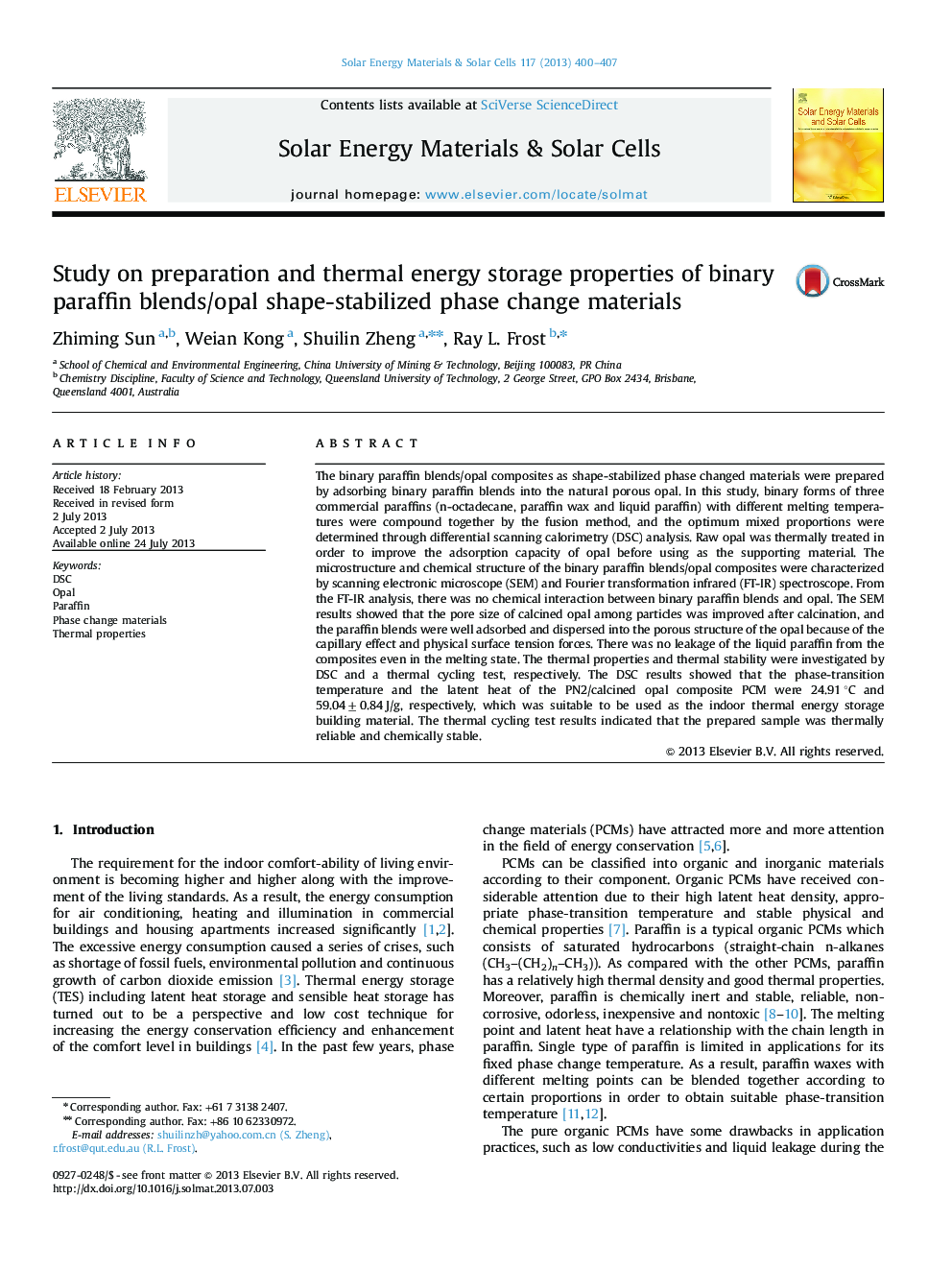| Article ID | Journal | Published Year | Pages | File Type |
|---|---|---|---|---|
| 6536344 | Solar Energy Materials and Solar Cells | 2013 | 8 Pages |
Abstract
The binary paraffin blends/opal composites as shape-stabilized phase changed materials were prepared by adsorbing binary paraffin blends into the natural porous opal. In this study, binary forms of three commercial paraffins (n-octadecane, paraffin wax and liquid paraffin) with different melting temperatures were compound together by the fusion method, and the optimum mixed proportions were determined through differential scanning calorimetry (DSC) analysis. Raw opal was thermally treated in order to improve the adsorption capacity of opal before using as the supporting material. The microstructure and chemical structure of the binary paraffin blends/opal composites were characterized by scanning electronic microscope (SEM) and Fourier transformation infrared (FT-IR) spectroscope. From the FT-IR analysis, there was no chemical interaction between binary paraffin blends and opal. The SEM results showed that the pore size of calcined opal among particles was improved after calcination, and the paraffin blends were well adsorbed and dispersed into the porous structure of the opal because of the capillary effect and physical surface tension forces. There was no leakage of the liquid paraffin from the composites even in the melting state. The thermal properties and thermal stability were investigated by DSC and a thermal cycling test, respectively. The DSC results showed that the phase-transition temperature and the latent heat of the PN2/calcined opal composite PCM were 24.91 °C and 59.04±0.84 J/g, respectively, which was suitable to be used as the indoor thermal energy storage building material. The thermal cycling test results indicated that the prepared sample was thermally reliable and chemically stable.
Related Topics
Physical Sciences and Engineering
Chemical Engineering
Catalysis
Authors
Zhiming Sun, Weian Kong, Shuilin Zheng, Ray L. Frost,
